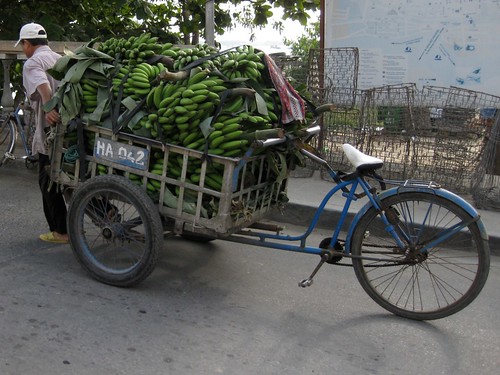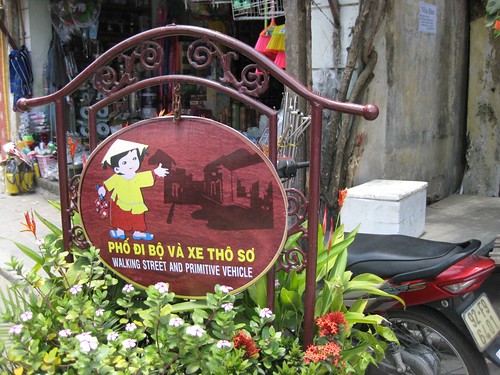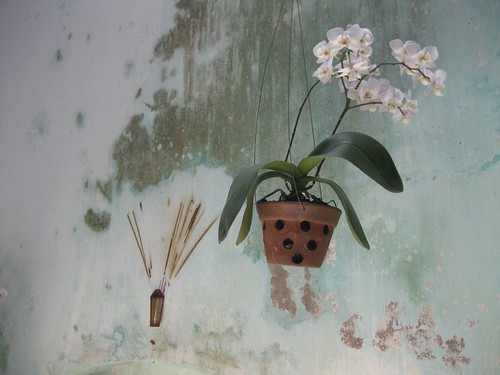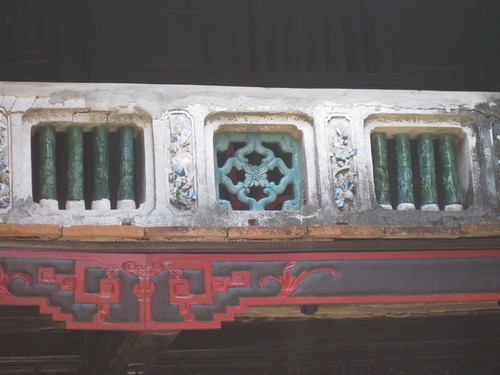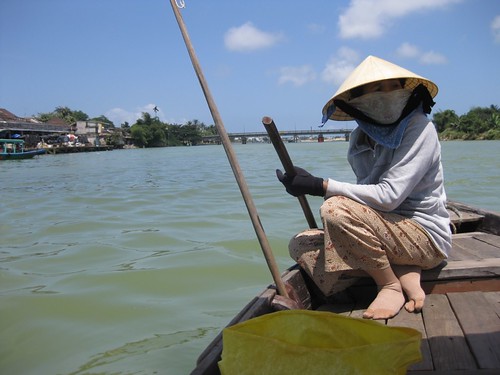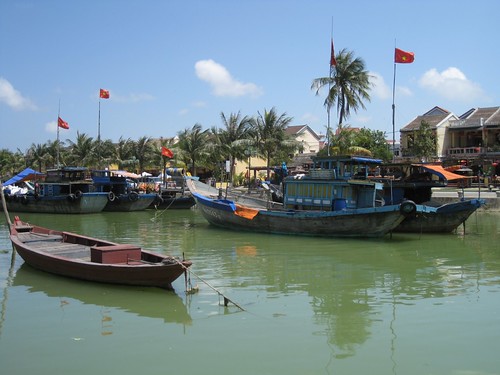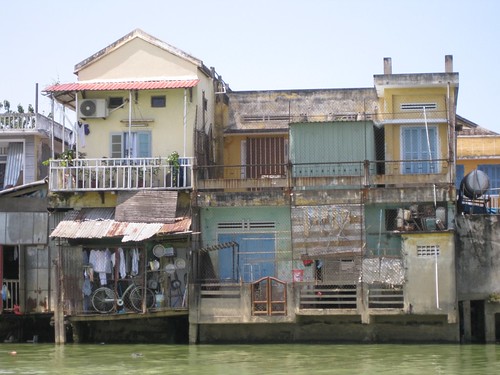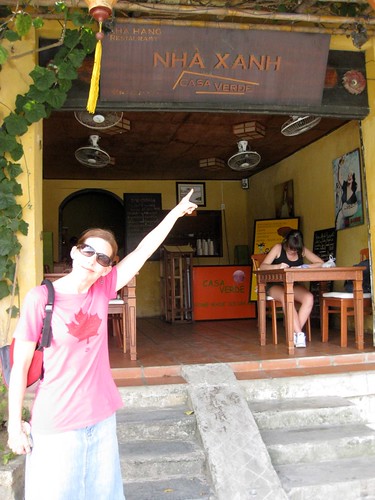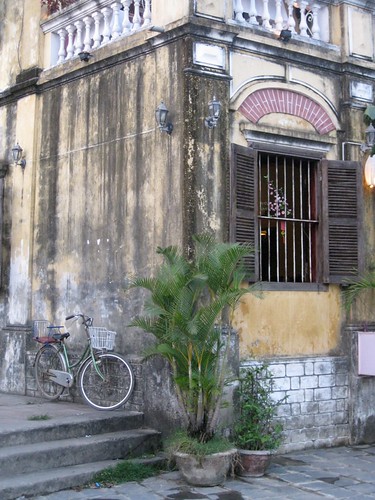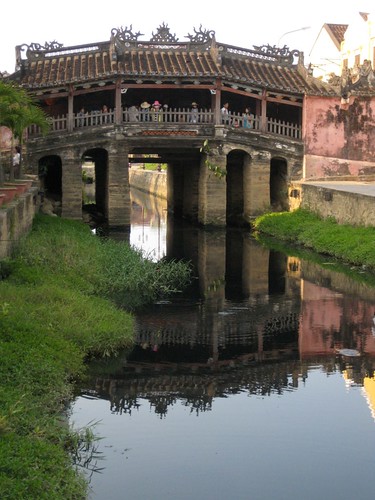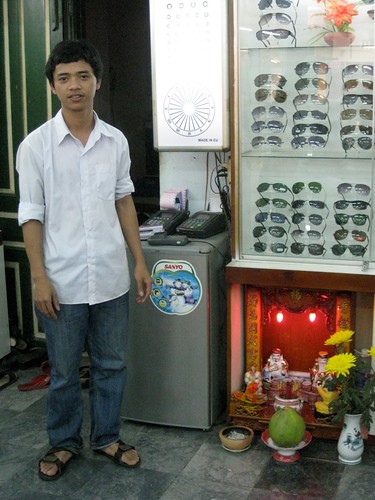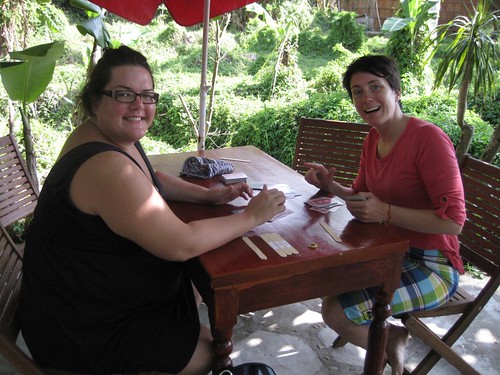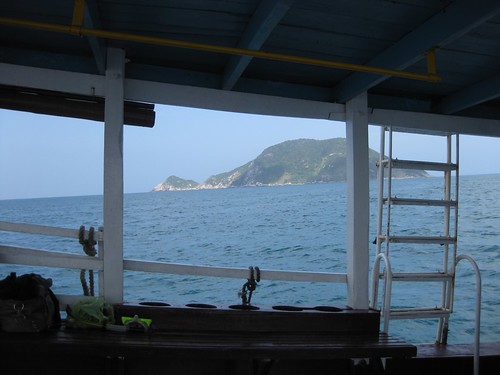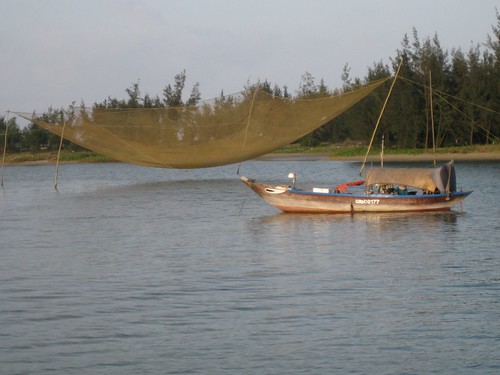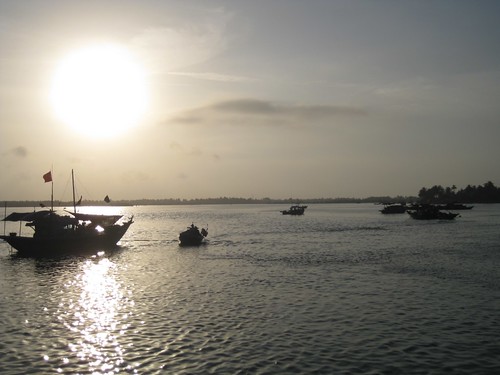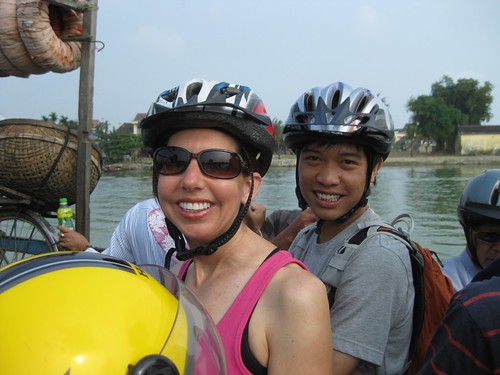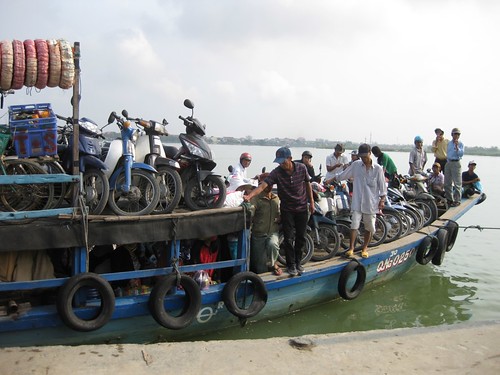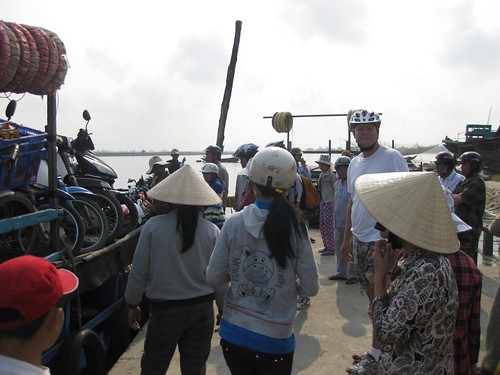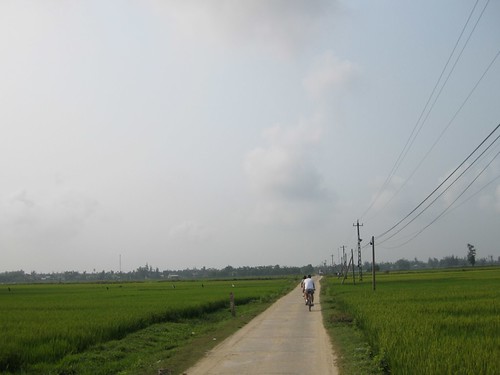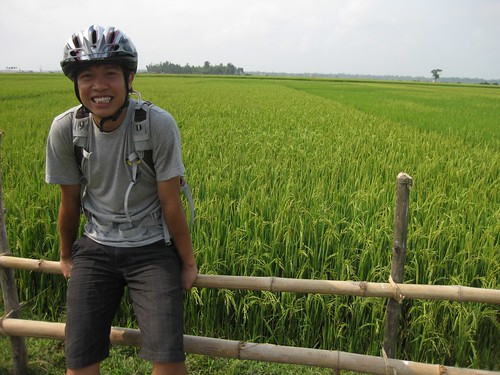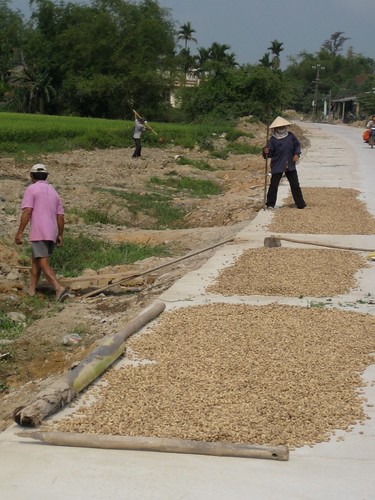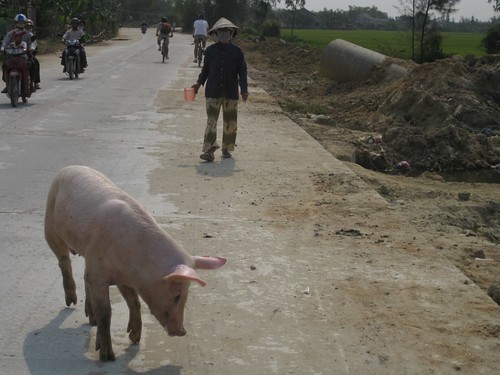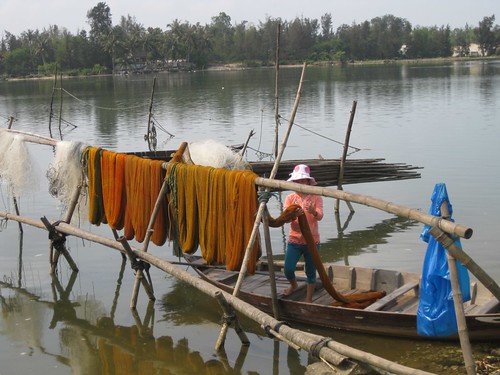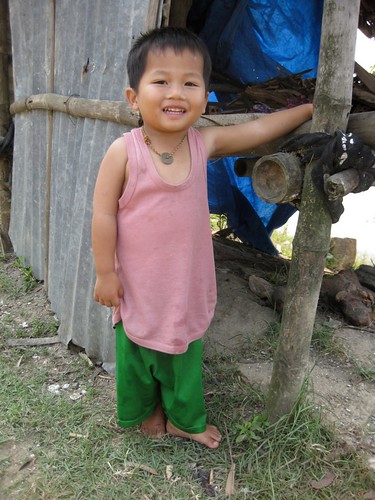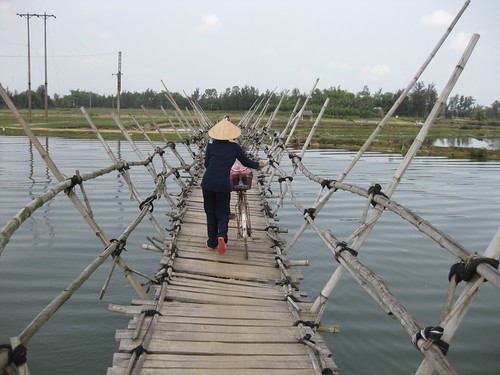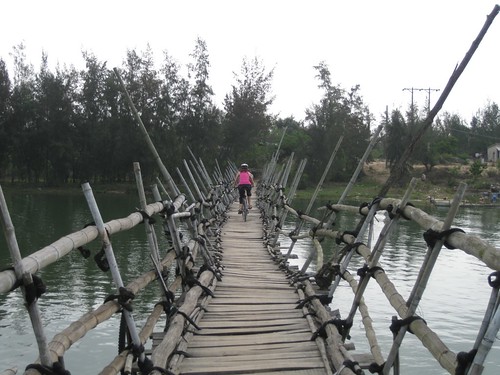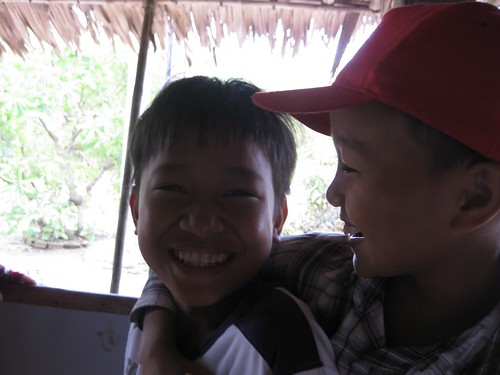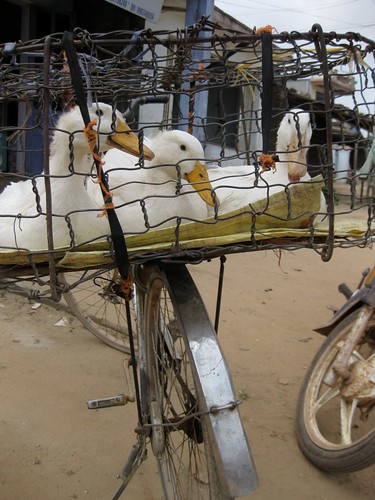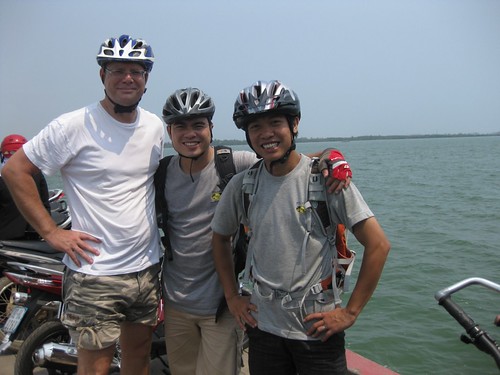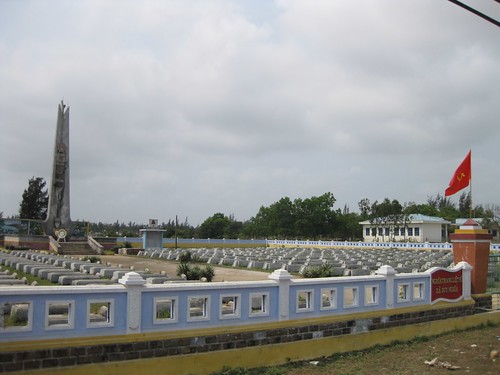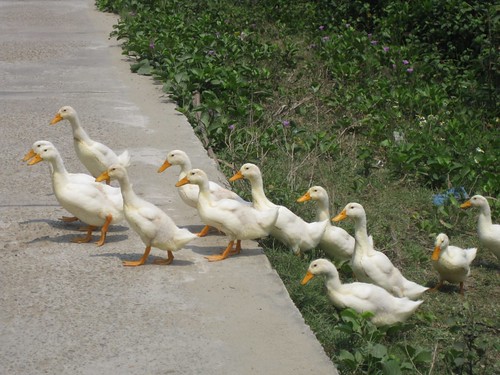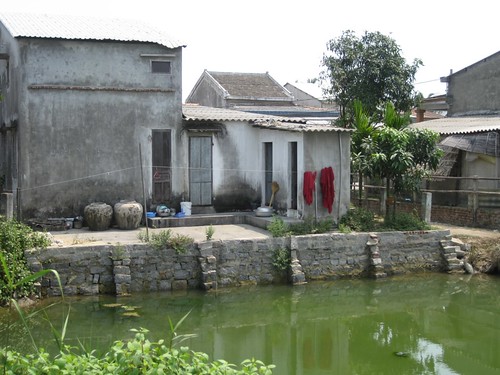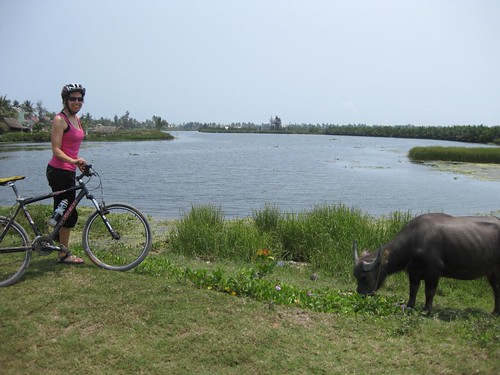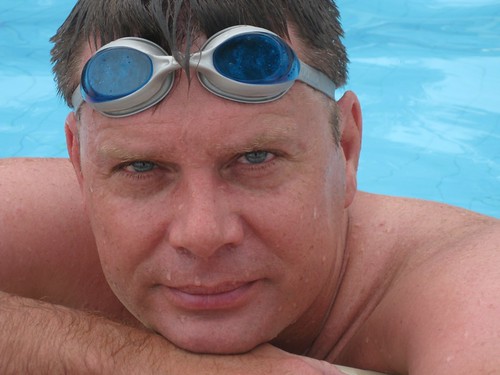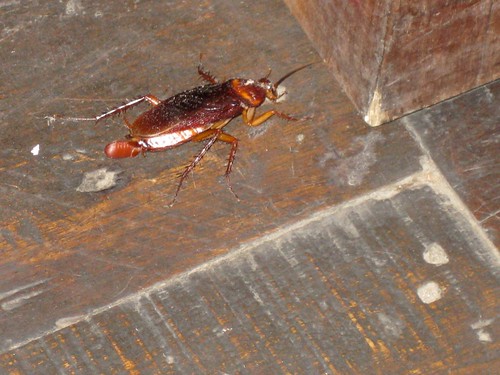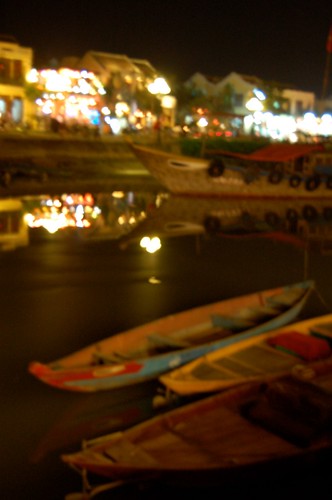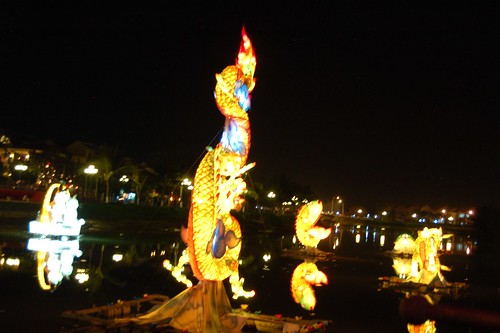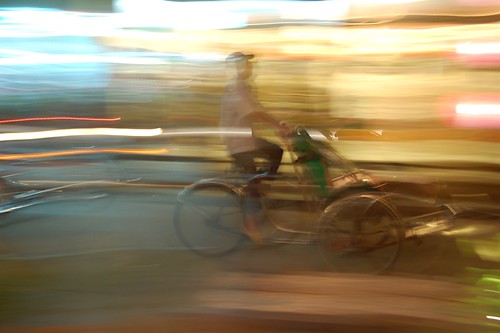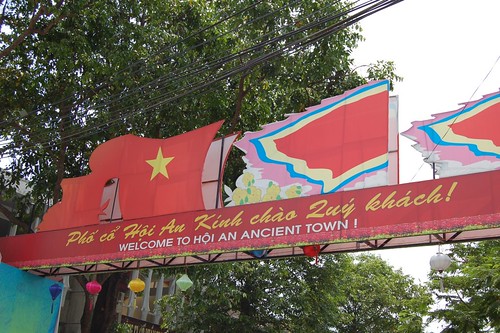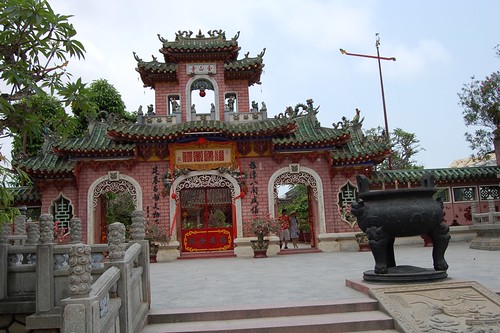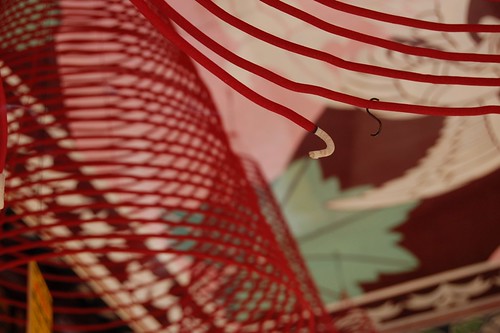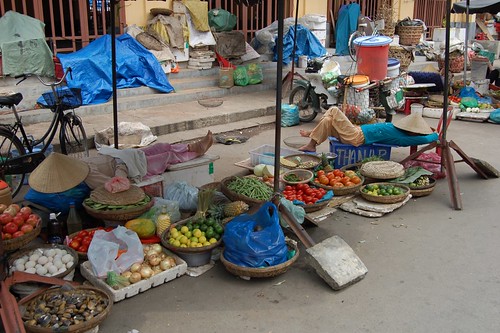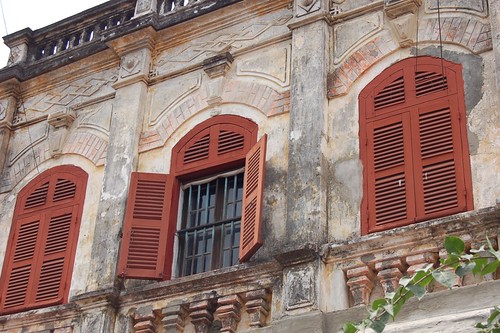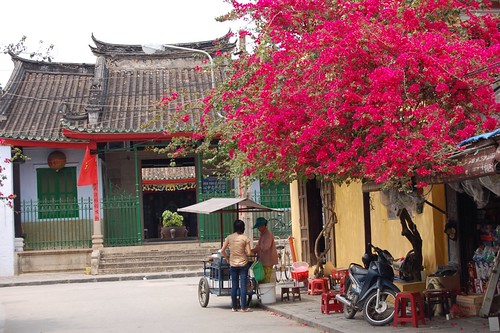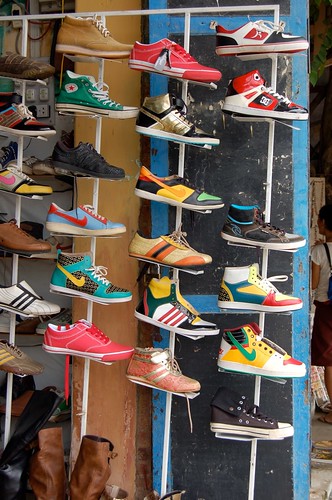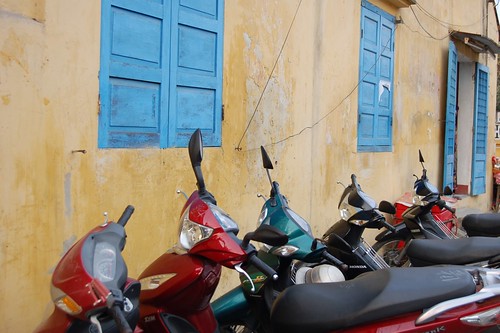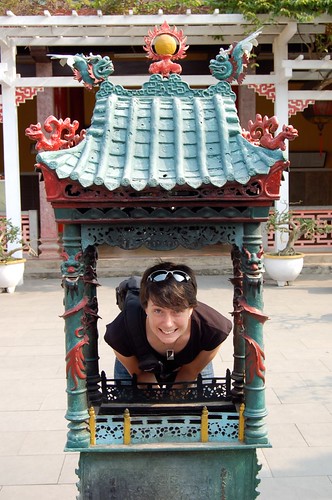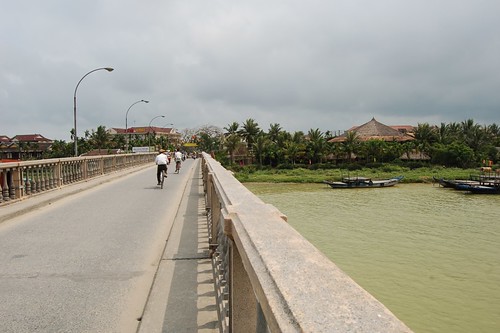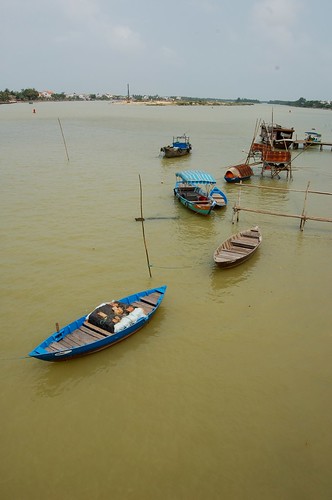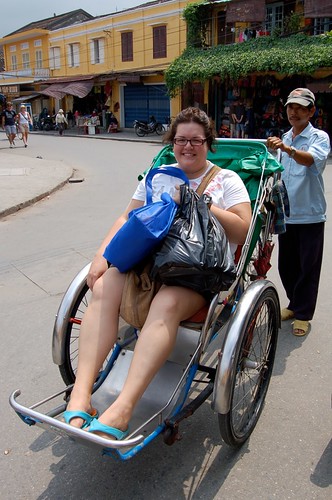For my first three-day weekend in India, I joined eight other teachers for a roadtrip to see the Taj Mahal. In an uncharacteristic move, I relinquished all power and let a new friend, Sandra, organize the whole thing. I hopped in the van Saturday morning without knowing (a) exactly where we were going, (b) what kind of hotel she booked, (c) whether we would have a guide, and (d) what was on the itinerary. How liberating!
Tony took too long to commit to the trip, so Sandra filled all the seats in the van. He was fine with that. In my absence, he bought a TV and a toaster, so it worked out well for everyone.
See my previous post, Getting to Agra, for details on the chaotic colorful cacophany we experienced on the journey.
After seven hours of watching India roll by the van windows like some unscripted Bollywood movie, we pulled in to a parking lot and met Tanveer, who would be our tourguide in Agra. He explained that we were going to visit Akbar’s Tomb first. This was a pleasant surprise as I hadn’t realized we’d be seeing anything other than the Taj Mahal.
I will describe our sightseeing as though I knew what I was seeing at the time, but really I returned to New Delhi and researched everything before starting this blog post. Just play along.
So who the heck is Akbar, and why were we visiting his tomb?
The Mughal Empire controlled much of the South Asia from 1526 to 1858, and Jalāl ud-Dīn Muhammad Akbar (eventually known as – or self-dubbed – Akbar the Great) became the third Mughal emperor in 1556 at the age of 13. During his 49-year reign, he modeled religious tolerance and a passion for art, literature and culture. He was also a follower of Salim Chishti, a holy man who lived in the region of Sikri. Remember that fact; it will be important later.
At the time, it was customary to design and construct your tomb while you were still around to see it. Akbar planned it and picked the site but died of dysentery before it was finished, so his son Jahangir oversaw its completion. The red sandstone contrasts dramatically with the white marble and black slate, and the Persian calligraphy is gorgeous. Tanveer pointed out a flaw: White marble slabs with inlaid black calligraphy reach up on both sides of the main gate’s arch, but then peter out. The calligrapher didn’t space his work properly to the fill the whole canvas. Plus, thanks to the laws of physics, the inscriptions up high look teeny compared to the elegantly huge writing at eye level. Tanveer said the calligrapher, Amanat Khan, learned his lesson. (That’s another little bit of foreshadowing.)
In this slideshow, you see a tomb, but that’s only a cenotaph – a word I just learned that means an empty tomb used to honor the deceased. Akbar is actually buried on a lower floor inaccessible to tourists. You’ll also see a blurry shot of a precious little girl. Stupid shaky hands! We saw a jillion beautiful people on this trip, and I wanted to take pictures of all of them. This family happily complied and then posed with me for some pics of their own.
Leaving Akbar’s Tomb, wild green parakeets swooped overhead and landing in the trees. Tanveer announced our next stop: Agra Fort.
Now we’re going to be bouncing around through time as I detail our Agra trip, so bear with me. Fortunately, all the main characters are related, so it shouldn’t get too complicated.
The imposing red sandstone walls of Agra Fort popped against the bluest sky I’ve seen in ages. The fort’s 1.5 miles of enclosure walls surround the imperial city of the Mughal rulers, starting with our buddy Akbar in 1565.
Only 10 percent of the fortress was open for visitors, thanks god. That 10 percent was exhausting! In one tower with a beautiful white marble balcony, Tanveer told us this was where Akbar’s grandson Shah Jahan lived out the last eight years of his life in exile after his son Aurangzeb staged a violent overthrow. Shah Jahan spent many hours each day staring out over the Yamuna River at his beloved wife’s mausoleum, the Taj Mahal. Stay tuned for details on that world wonder!
Tanveer rattled off one fascinating anecdote after another as he rushed us through the various buildings, courtyards and gardens. He was appropriately bossy and exasperated when we didn’t pay attention, so I felt nervous straying away to take photos. Hence, these shots aren’t very creative. That’s Tanveer by the fort map, and that’s the Taj Mahal in the background shot of me. Very cool.
Turns out Agra Fort was one of three UNESCO World Heritage sites we would visit this weekend. For more details on Agra Fort, check out the UNESCO website.
The brilliant blue sky had turned gray and angry by the time we finished seeing the fort, and we returned to our hotel in a downpour. We stayed at the Raj Mahal, which bills itself as “world-class luxury.” Not so much. But it was perfectly clean, comfortable and quiet. After a long day of sight-seeing in the hot sun, all I wanted in the whole world was a cold beer. Alas, Agra is a predominantly Muslim city, and most people were observing Ramadan, so we were lucky to get snacks and water in the hotel restaurant.
Our gang rose early to visit the Taj Mahal at sunrise. Tanveer said only the “lovers” – people who want to take their time and treasure the experience – visit the Taj this early. It seems he was right; the crowd didn’t start to swell until we were on our way out. Perfect.
So back to the Mughals. Remember poor Shah Jahan who was exiled at Agra Fort? Before his son got all crazy on him, he was the fifth Mughal emperor from 1627 to 1658. Obsessed with art, architecture and opulence, he was a prolific builder and supported some of the era’s most renowned craftsmen.
The relationship of Shah Jahan and his young queen Mumtaz Mahal is legendary. Although he had two other wives, historians agree Mumtaz Mahal was his one true passion. When she died giving birth to their 14th child, Shah Jahan vowed not to take any more wives and to build the most beautiful mausoleum in the world.
PBS tells the tale beautifully with Taj Mahal: Memorial to Love.
Tanveer brilliantly built suspense, walking us slowly up to the massive red sandstone gate that opened to the Taj Mahal garden while sharing the history and facts about the site. When the gleaming white marble building came into view, it honestly made me gasp. Built on a hill above the Yamuna River, it appears to float in the sky, a fitting tribute in a dreamy love story.
We strolled along the garden paths, pausing frequently to admire the Taj from different angles. Tanveer pointed out the mosque on the left-hand side and a matching building on the right-hand side built in a quest for perfect symmetry. The extra building couldn’t be used as a mosque (because it pointed away from Mecca), so it became a rest house where Taj Mahal visitors would hang out after praying at the mosque and paying their respects at the mausoleum. Considering the rest house was merely a symmetrical prop, its design and intricate carvings were quite impressive. (See the photos of the red sandstone building in the Taj Mahal slideshow.)
The Taj Mahal itself was both smaller and more awe-inspiring that I expected. I knew it had been built by an emperor for his beloved queen, but I guess I missed the fact about it being a mausoleum. I was expecting a meandering palace attached to her burial site. In fact, you could walk around the whole thing in just a few minutes.
But you wouldn’t want to; you have to take is slowly to absorb all the incredible detail that 22,000 workers spent 22 years crafting. Delicate carvings, white marble inlaid with semi-precious stones, minarets that lean slightly away from the mausoleum in case of an earthquake, the 33-foot-high brass finial at the top of the dome, magically designed arches that appear and then disappear a few steps later, towering columns of inlaid Persian calligraphy, the effect of the rising sun on the marble’s hue, the tiny windows of mica, and the view over the river to the Agra Fort, where Shah Jahan mourned his dead wife.
Remember the poorly planned calligraphy at Akbar’s tomb? By the time Shah Jahan hired that same calligrapher to decorate the Taj Mahal, the artist had worked out some fairly advanced math. According to a website on Taj Mahal calligraphy,
The calligrapher’s signature bears witness to his status and renown at the court, since many of his peers remained anonymous. He was so talented that he used an optical trick to inlay the verses at the Taj. The letters seem to be of equal size but they are not. As they move upwards to the peak of the arches, they gradually get bigger. It is a fact that things that are far away look smaller, hence by varying the size of the letters, the inscriptions look perfectly proportioned, no matter where you view it from. Such is the perfection of the Taj!
Photography was prohibited inside, unfortunately. Just like Akbar’s Tomb, there were cenotaphs to represent the caskets of Shah Jahal and Mumtaz Mahal surrounded by a lacy screen carved from marble; the real tombs were downstairs. Shah Jahal’s cenotaph is the only asymmetrical element in the whole complex. He hadn’t planned on being buried here, but his own mausoleum was never built.
UNESCO World Heritage Site number two? Check.
We returned to the hotel for breakfast and then checked out, loaded our bags into the van and headed to Sikri for our last sight-seeing stop in Agra.
Remember when I mentioned that ol’ Akbar the Great was a follower of the Salim Chishti? Akbar visited the Sufi saint when his wife had failed to conceive. Salim Chishti blessed the emperor, and soon the first of three sons was born. Akbar was smitten, so he did what anyone would do: build a whole new city and move the capital of his empire there just to be near his favorite holy man.
The UNESCO World Heritage site says, “it offers a unique example of architectural ensembles of very high quality constructed between 1571 and 1585.” Sikri was the capital of the Mughal Empire for only about 10 years, and then it was all but abandoned until archaeologists “re-discovered” it in 1892.
I love roaming around places like this, trying to imagine life as a 16th-century royal. It wasn’t easy for those ladies – stone beds, no air-con, competing wives and murderous sons, etc. Imagine being one of the slave girls who served as a living pawn in the life-sized chess-like courtyard game!
In this slideshow, you see the countryside as we approach Sikri. That was quite a change from the roadside scenery in Agra. The rest of the shots are inside the ancient city. One pic shows some remaining frescoes, although most of the city is unpainted with fine stone carving miraculously intact. The shot with Tanveer was an attempt to capture the purple comb in his back pocket, but also to show the stone pattern for the courtyard game played with live girls.
UNESCO World Heritage site number three? Check!
Here are some random shots of Agra from the bus window: a modern Indian family on a scooter, water buffaloes cooling off in a city pond, and people going about their business.
We were so lucky to have beautiful weather at all our stops, especially considering it’s monsoon season. Shortly after leaving Sikri for our ride back to Delhi, the deluge began again.
We got home lickety-split – only five hours, compared with the seven hours we spent getting to Agra. Next time, I’ll take the express train. Although my body feels like it got run over by an overloaded tuktuk, I feel incredibly fortunate to live here with so many opportunities to explore historical and contemporary India. I am now an Indian-culture addict. Where will I get my next fix?

